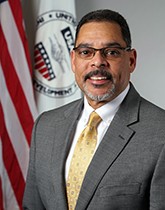You are viewing:
Archived Content
Information released online before January, 2021.
You are viewing:
Information released online before January, 2021.
Note: Content in this archive site is NOT UPDATED, and external links may not function. External links to other Internet sites should not be construed as an endorsement of the views contained therein.
You are entering the 2017-2020 Archive for the
United States Agency for International Development web site.
If you are looking for current information, visit www.usaid.gov.
Equal employment opportunity (EEO) principles and diversity management are at the core of any successful agency. The U.S. Agency for International Development (USAID), Office of Civil Rights and Diversity (OCRD) is an independent office that reports to USAID’s Administrator. OCRD’s goal is to promote and foster a diverse and inclusive workplace, free of discrimination, where all employees are valued and can contribute to their fullest potential.
OCRD consists of two sections: the Dispute, Intake, and Resolution (DIR) section and the Diversity Management and Outreach (DMO) section. OCRD’s DIR section addresses allegations of discrimination in the workplace. DIR manages the EEO complaint process, the Alternative Dispute Resolution Program, the Reasonable Accommodation process, and the Anti-harassment Program. If you believe you have been discriminated against, please contact OCRD within 45 calendar days of the alleged discriminatory act. If you are interested in viewing USAID’s most recent Notification and Federal Employee Anti-Discrimination and Retaliation (No FEAR) Act Report, click here.
OCRD’s DMO section has overall responsibility for among other things the following: providing diversity and inclusion training to USAID’s workforce; managing the special emphasis programs; and reviewing and analyzing race, sex, national origin, and disability workforce demographics. If you are interested in viewing USAID U.S Direct Hire Workforce Demographics, click here [PDF]. OCRD recognizes that EEO principles and diversity management are not only critical to employees; both are also vital to drive innovation and forge strong relationships with stakeholders, which is fundamental to the success of USAID’s mission and initiatives.
OCRD also publishes the Management Directive 715 Report on the efforts and accomplishments of the Agency for maintaining a Model EEO Program. The report is developed from the following actions:

Comment
Make a general inquiry or suggest an improvement.